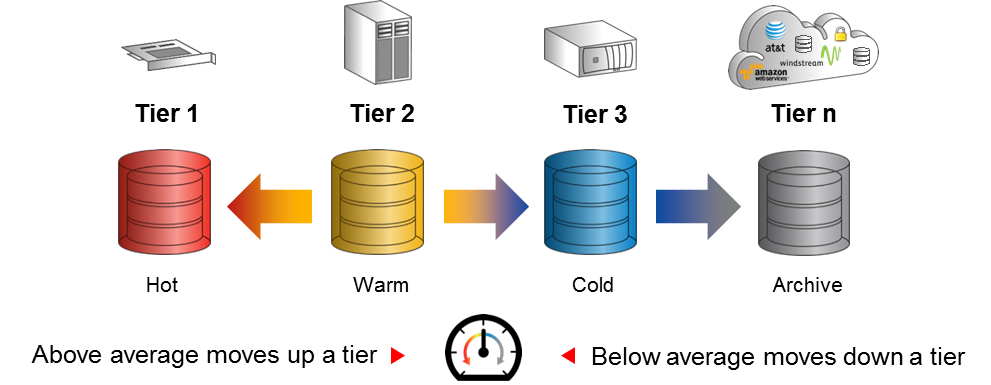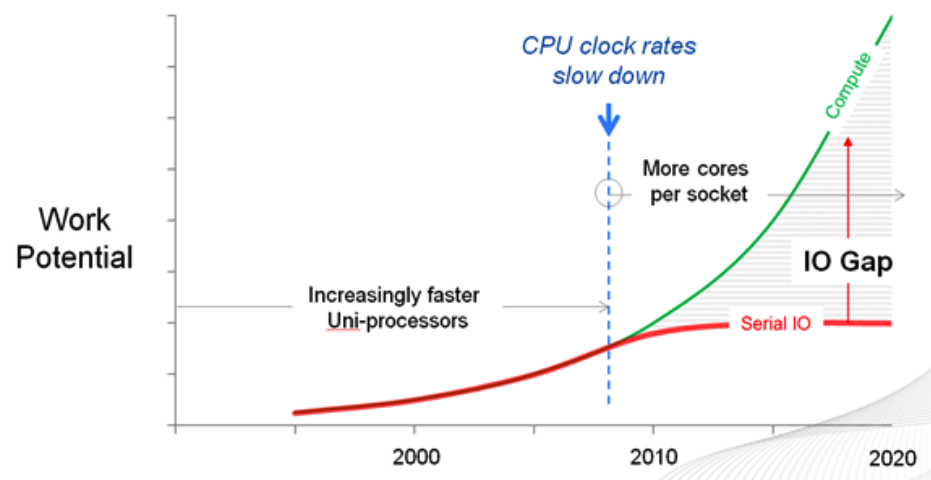DataCore Showcased Parallel I/O Software
First company's product not only for storage but eventually for servers only
This is a Press Release edited by StorageNewsletter.com on October 26, 2015 at 2:51 pmDataCore Software Corp. showcased its adaptive parallel I/O software to VMware, Inc. customers and partners at VMworld Europe 2015.
This software technology harnesses multi-core processing systems to maximize server consolidation, cost savings and application productivity by eliminating the major bottleneck holding back the IT industry – I/O performance. The company used the backdrop of VMworld Europe 2015 to debut ‘Proven Desig’ reference architectures, a vSphere deployment wizard for hyper-converged virtual SANs and the next update of SANsymphony-V software-defined storage which extends vSphere Virtual Volume (VVOLs) support to new and already installed flash and disk-based storage systems lacking this capability.
Virtualize external storage hardware
“The combination of ever-denser multi-core processors with efficient CPU/memory designs and DataCore’s adaptive parallel I/O software creates a new class of storage servers and hyper-converged systems that change the math of storage performance…and not by just a fraction,” said Ziya Aral, chairman, DataCore. “As we begin to publish ongoing real-world performance benchmarks in the very near future, the impact of this breakthrough will become very clear.“
Company’s technical staff discussed the state-of-the-art techniques used to accelerate performance and achieve much greater VM densities needed to respond to the demanding I/O needs of enterprise, tier-1 applications. The company will highlight performance optimizations for intense data processing and I/O workloads found in OLTP systems, real-time analytics, business intelligence and data warehouses. These breakthroughs have proven valuable in the mission-critical lines of business applications based on SQL Server, SAP and Oracle databases.
Auto-tiering dynamically optimizes resources
Universal virtual volumes:
Extends VMware’s VVOL benefits to storage systems that do not support it
Many VMware administrators crave the power and fine-grain control promised by vSphere Virtual Volumes (VVOLs). However, most current storage arrays and systems do not support it. Manufacturers simply cannot afford to retrofit equipment with the new VM-aware interface.
DataCore offers these customers the chance to benefit from VVOLs on EMC, IBM, HDS, NetApp and other popular storage systems and all flash arrays simply by layering SANsymphony-V storage virtualization software in front of them. The same is true for DAS pooled by the company’s Hyper-converged Virtual SAN.
vSphere administrators can self-provision virtual volumes from virtual storage pools – they specify the capacity and class of service without having to know anything about the hardware.
Other announcements and innovations to VMware customers include:
-
Hyper-converged software solutions for enterprise applications and high-end OLTP workloads utilizing company’s Adaptive Parallel I/O software.
-
New ‘Proven Design’ reference architectures for Lenovo, Dell, Huawei, Fujitsu and Cisco servers spanning high-end, midrange and smaller configurations
-
A worldwide partnership with Curvature LLC to provide users a novel procurement and lifecycle model for storage products, data services and centralized management that is cost-disruptive
-
vSphere Deployment Wizard to quickly roll out Hyper-converged Virtual SAN software on ESXi clusters
-
Stretch cluster capabilities ideal for splitting hyper-converged systems over metro distances
Comments
For the first time since its inception in 1998, DataCore released a software not only for storage: Parallel I/O, answering to a major bottleneck, serial I/O performance of server with multi-core processors. It could enlarge its market to server virtualization.
Parallel I/O is offered for free to customers of SANsymphony-V10 but DataCore's CEO, president and co-founder George Texeira considers the possibility to build a special stand-alone software version to be offered in OEM to server manufacturers. The company is already working with several of them: Cisco, Dell, Fujitsu, Huawei and Lenovo.
It could be a possibility for the old DataCore to finally expand seriously, as annual revenue is under $60 million even if $117 million was invested in the company profitable these last 12 years, even if it counts 25,000 deployments and 10,000 customers worldwide.
In two sentence Texeira summarizes the new product: "Parallel I/O software will be the next killer app that will allow the industry to build on virtualization and fully utilize the multiple cores that are readily available, and allow for greater productivity and further consolidation of server technology by allowing more applications, VMs and workloads to run on these platforms without being bottlenecked by I/O. Harnessing today's powerful multi-core servers to do parallel I/O is the way to unleash the full power of Moore's Law and make it possible through virtualization to increase business productivity - and therefore drive the promise of software-defined data centers."
Note that the word 'storage' is not included at all in this definition.
I/O Starved Virtualization Servers
Parallel I/O is based on parallel processing that was developed more than three decades ago by companies like Encore - where Texeira and co-founder John Bocskor worked - to create super fast computing platforms by operating multiple processors in parallel. It's not anymore used and was supplanted by PCs running on a network, and parallel architectures were replaced by frequency scaling, driving faster and faster clock frequency to achieve performance gains, with multi-core computing (with 100 cores and more) becoming the dominant form today.
The downside is that virtualization and server consolidation creates a workload blender effect in which more and more of the application I/O workloads are concentrated on the same system and must be dealt with. All of those VMs and their applications become easily bottlenecked going through a common 'I/O straw.' As processors and memory have dramatically increased in speed, this I/O straw continues to bottleneck performance - especially when it comes to the critical business applications driving databases and on-line transaction workloads. Today hypervisors, OSs and container virtualization treat I/O serially even though workloads are scheduled to run in parallel across several CPUs.
DataCore is since a longtime in parallelism in storage virtualization. Parallel I/O is a software stack with parallel I/O capabilities to remove the roadblocks holding back application performance.
Advantages, according to DataCore:
- Work completes in 1/5 the time without adding hardware
- Two machines can do work of ten
- 5X lower overall solution cost
These results will be confirmed soon following an SPC report on the subject.


















 Subscribe to our free daily newsletter
Subscribe to our free daily newsletter

